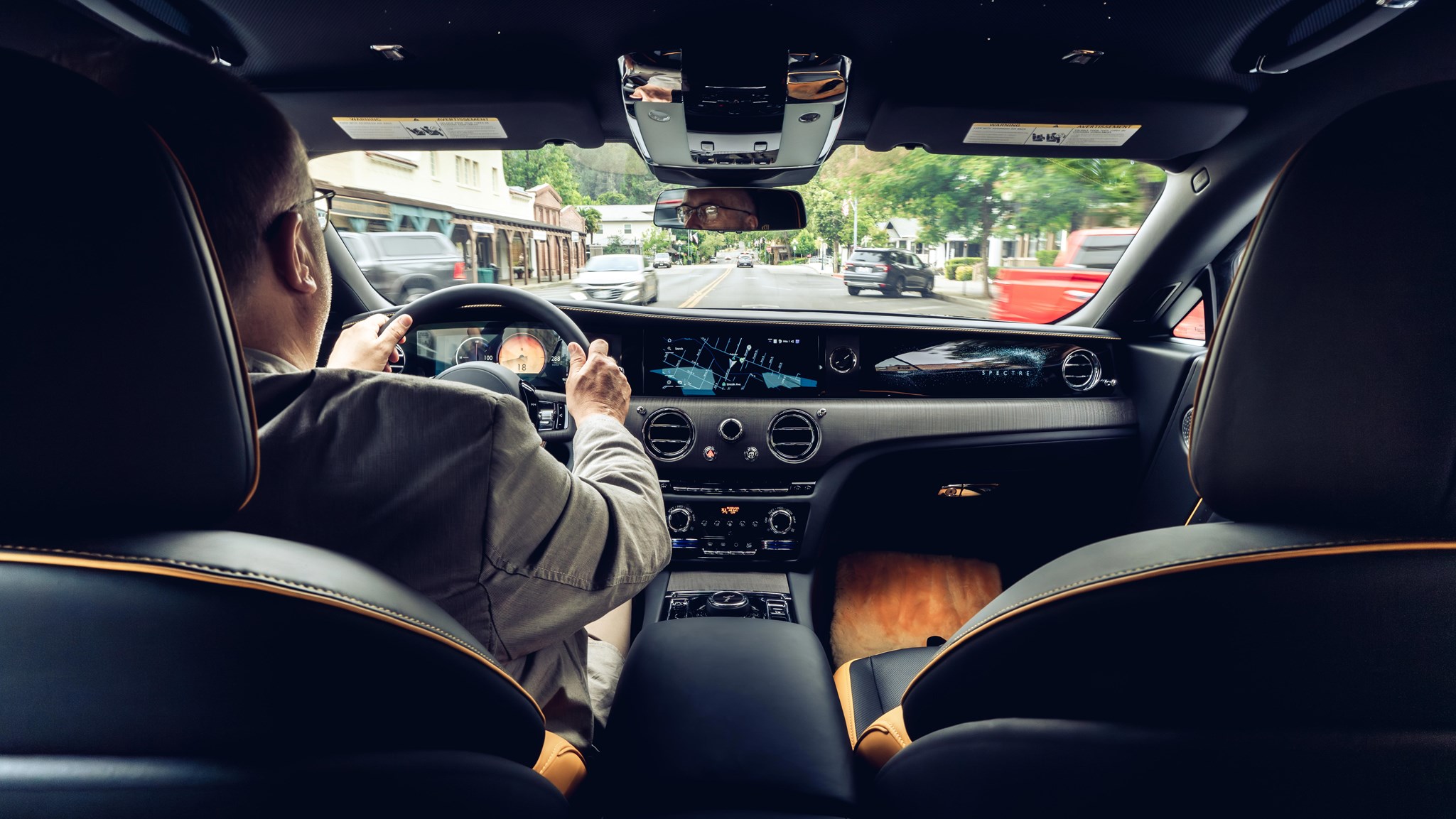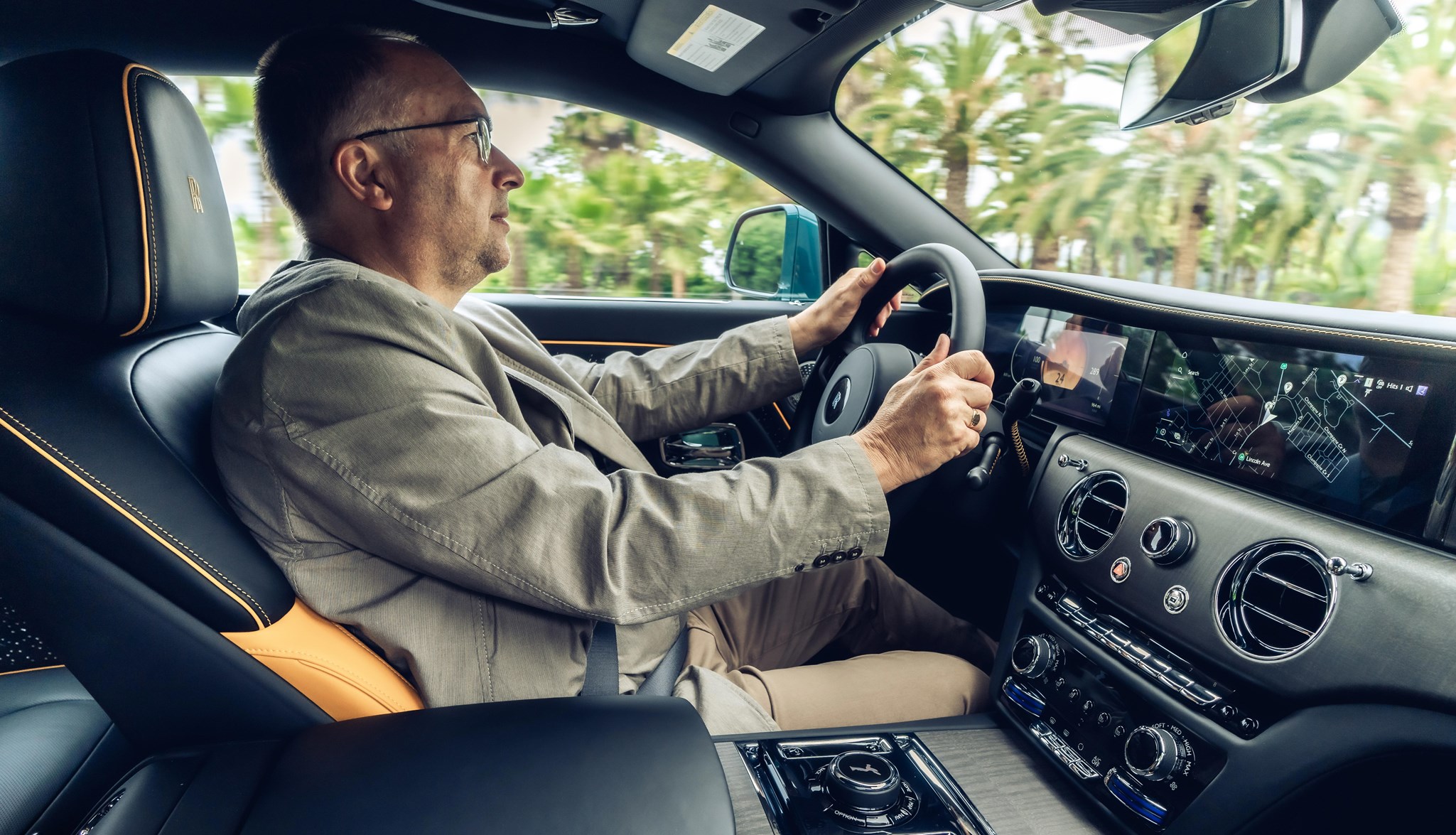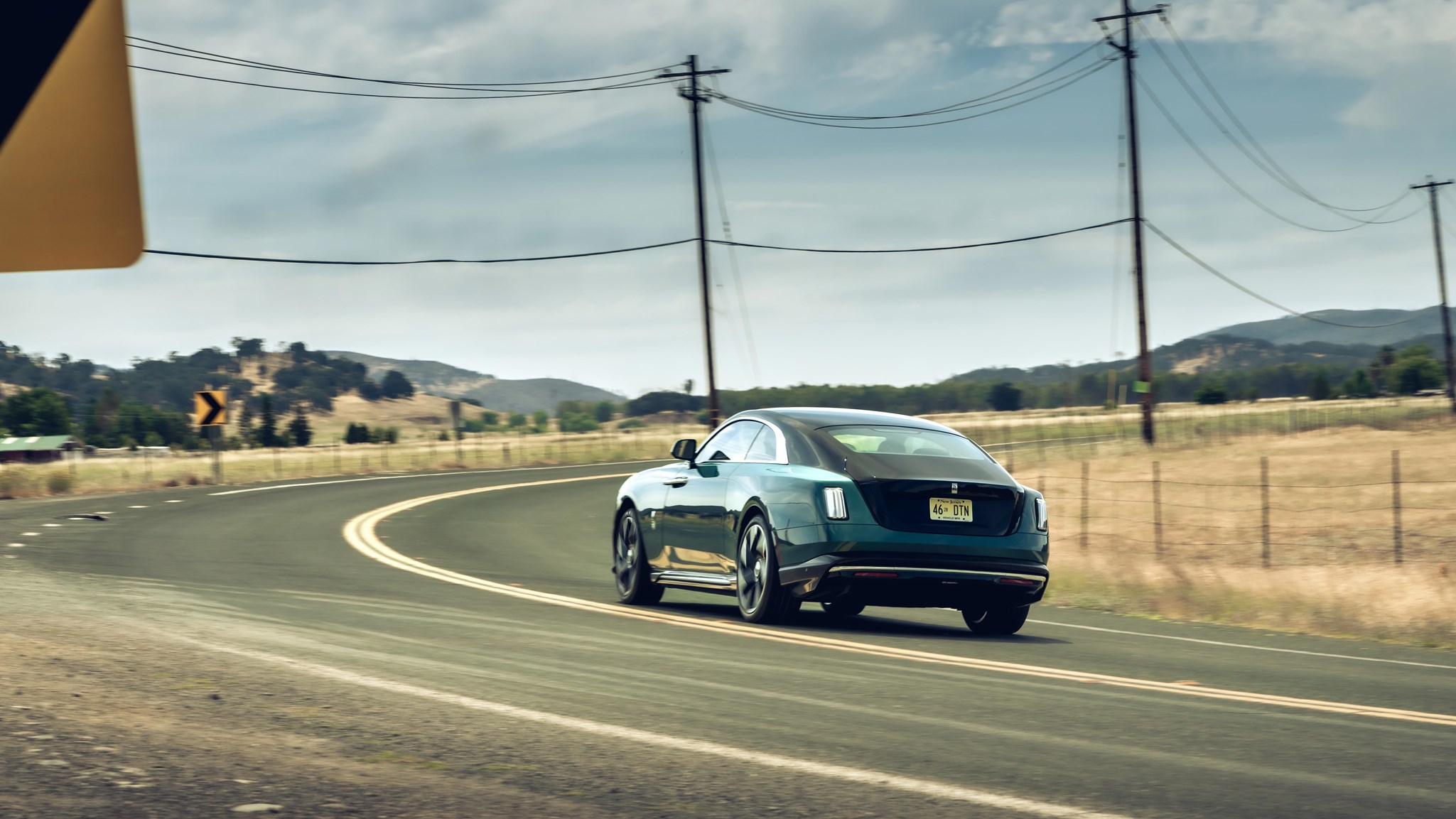► All-new luxury sports coupe
► First production all-electric Rolls-Royce
► Four seats, two doors, a world of pampering
Only a couple of years after Rolls-Royce announced that it had begun testing its first full-scale electric car, we’ve driven the production version of the Spectre.
The numbers tell part of the story: it’s a heavy (2890kg), powerful (577bhp) four-seater that costs a lot (£275,000 plus taxes, before you start personalising and accessorising; don’t expect change from £400,000). It has a 102kWh battery, an electric motor at each end, all-wheel drive, all-wheel steer, vast rear-hinged doors and a decent-sized boot.
But the other part of the story is that Rolls is embracing electrification, not as something being forced upon it by legislation or the pressure of social acceptance, but because the technology is very well suited to the Rolls vibe: smooth, wafty, hushed and clean. Also, on a more practical level, Rolls customers tend to have their own chargers, and plenty of alternative transport options if they’re worried that the official 329-mile range might be a bother.

By the end of 2030, every new Rolls-Royce coming out of the factory in Goodwood will be electric. And no two will be the same, as the BMW-owned company’s embrace of customer-led individualisation continues.
Where does it sit in the line-up?
It’s roughly similar in size to the Ghost, the smaller of the four-door saloons; it looks lower, but isn’t. It’s the most powerful Rolls-Royce ever, and the quickest to 62mph, as you might expect from an EV – it’s what electric cars do best.
The proportions are loosely modelled on the old Phantom Coupe, a niche model that’s a rarely seen even in Rolls strongholds like Mayfair and Beverley Hills, rather than the oddly ungainly Wraith.
Under the skin it uses a version of the aluminium spaceframe now employed in all series-production Rolls-Royces – the Phantom, Ghost and Cullinan, the cars alongside which it is built at the Goodwood factory.

That spaceframe had enough adaptability designed into it from the off that it’s able to lose the engine from under the bonnet and replace it with front and rear electric motors, feeding from a huge battery pack in the floor.
That battery, with a net capacity of 120kWh, is related to the pack used in the BMW i7, and there has naturally been some sharing of electric know-how between Munich and its upmarket outpost in West Sussex, but that’s pretty much it. This is a very, very Rolls-Royce car.
What’s it like to drive?
Lovely. Smooth, quiet and reassuringly heavy, like every modern Rolls we’ve driven. What’s inititially surprising is that despite its formidable power and torque figures, and a pretty perky 0-62mph acceleration time, it doesn’t go charging off the line like a frightened rhino.
The engineering team have decided, quite deliberately, to rein that potential in a little, partly in order to preserve the battery’s state of charge, but mostly to preserve the car’s dignity.

The ride quality on our test route in northern California – which took in pretty much everything from multi-lane highway, via hairpin-heavy hillclimbs, to gravel farm tracks – was very impressive. The adaptive air suspension works with active anti-roll bars to keep the body level, the wheels firmly in contact with the road and the occupants unruffled. It takes a rare combination of bumps, adverse cambers and tightening radii to unsettle it.
The steering – an all-electric, four-wheel system – is particularly impressive. You sit low, in a semi-sporting position, and get a good amount of feel and feedback, and a welcome degree of agility. We’re not talking Lotus Elise here, but it’s a properly engaging, rewarding experince.
At a glance, the cabin is very traditional. There are certainly lots of physical switches and knobs, all logically laid out and intuitive to use. There’s also a central touchscreen for the infotainment, controlled by an iDrive-style dial, or by prodding at the screen, or by using the controls on the large, chunky steering wheel.
As is often the case with Rolls-Royces, there’s very little to adjust when it comes to the fundamentals. No gears to change – just a column stalk to move between P, R and N. No choice of supension settings. No drive modes. And there’s only the simplest of adjustments possible for the level of brake regeneration: a B mode that it makes sense to engage on twisty downhill stretches, rather than employing the physical brakes. With B not engaged, the Spectre will coast very smoothly.

There are near-infinite choices of colours and details available, but essentially the cabin is – even more than the exterior – a great coming together of ancient and modern. The build quality is quite something, and the materials are top-notch. If it looks like metal, it is metal: cold to the touch, and with a lovely ding when you tap it.
The doors, hinged at the back, are almost 1.5 metres long. That sounds unmanageable, and would be if it had to be done manually, but there’s subtle electronic assistance, which is automatically adjusted to compensate for whatever slope you’re parked on. And yes, there are umbrellas slotted in to the door frames. Lovely, lovely umbrellas, by the way.
And in the back?
Surprisingly good. Rear-seat passengers of 6ft and slightly taller will find that there’s good legroom and headroom, despite the impression that may be created by the coupe roofline. It’s strictly two seats in the back, with a wide central armrest, and slightly less arm space on the door side than you’d get in other current Rollers.
It’s not particularly easy for hefty passengers to get in the back, but they’re fine once settled. The seats are well shaped to provide comfort and support, and you get a decent view out – the absence of a B-pillar makes a huge difference here, and stops the rear of the cabin becoming claustrophobic.
Passengers also get to control their own environment, but this is not a business class-style reclining set-up. The Spectre is the Rolls least likely to be driven by a chauffeur.

How practical is it to live with?
Like all EVs, you need to know what you’re getting into when you drive a Spectre. You won’t be able to bank on doing more than 300 miles between charges. You’ll need to allow 34 minutes for a 10 to 80 per cent charge using a 195kW fast charger, and that’s on a good day. You won’t be able to carry more than two people in the back. You will get into a great many conversations with people who want to know what it is.
You’d hardly be slumming it if you saved a small fortune and bought a BMW i7 or Porsche Taycan instead – both very good electric cars. What you’d be missing out on is the subjective, emotional stuff that comes with a Rolls-Royce. And while a Rolls is still an elitist, exclusive product, the average age has come way down (in the 40s), and the number of female buyers has increased (but it’s still only around 15 per cent). Part of that is down to the excellence of the products, but a lot is attributable to the Rolls-Royce ownership experience, which involves the factory, the dealers and the app treating you like a very, very special person.
Verdict
If you’re actually looking in this direction for sensible consumer advice, and you have half a million or thereabouts to spend on an electric four-seater, don’t let us stand in your way. The Spectre is good to drive, and a simply glorious object. From the overall look down to the smallest details, there is much to delight in. It feels and smells and sounds luxurious, with a neat balance of tradition and modernity.
If you just want to get from place to place in an EV, plenty of less expensive alternatives will get you there just as quickly, and most will be easier to park.

If, however, what you want is to get from place to place not in a car but in a Rolls-Royce, that requires a more complex answer. The V12-powered cars are all roomier, the Cullinan in particular is far more family-friendly, and the Ghost gives the Spectre a good run for its money dynamically. Those combustion cars will also need to spend less time stopped for refuelling, and they’re near as damn it almost as quiet.
But none of them can touch the Spectre for its novelty and its specialness, or its forward thinking.
And in any case, plenty of people rich enough to own a Rolls-Royce are actually rich enough to own several Rolls-Royces at once (and a Bugatti, couple of Ferraris, boat, plane), so the choice isn’t yes or no, it’s what colour?
Every Rolls-Royce makes a statement and invites comment. But the Spectre changes the language and tone of the conversation. It surprises and delights people just by existing; if you’re lucky enough to drive one, that’s pretty special too.